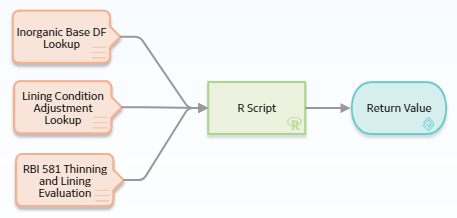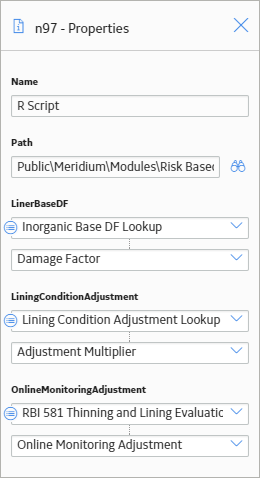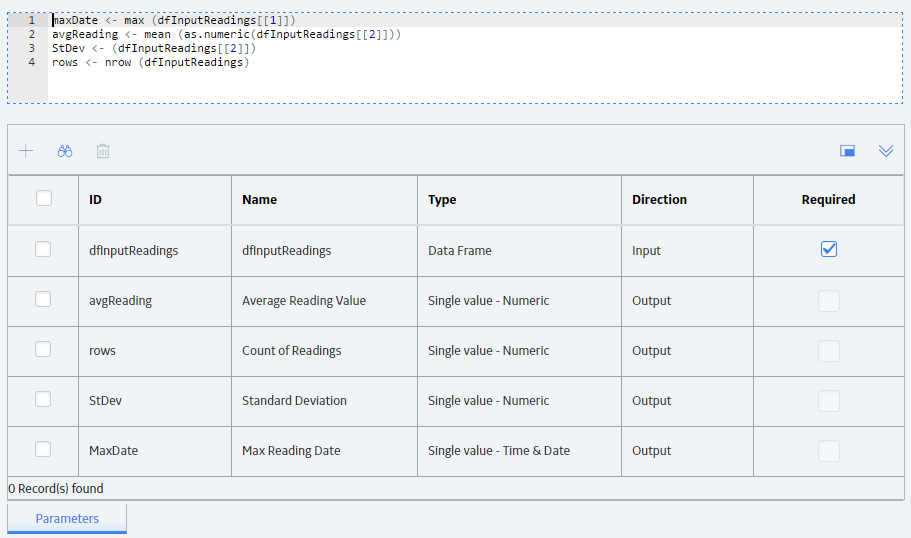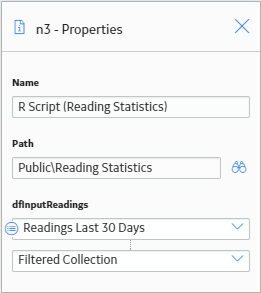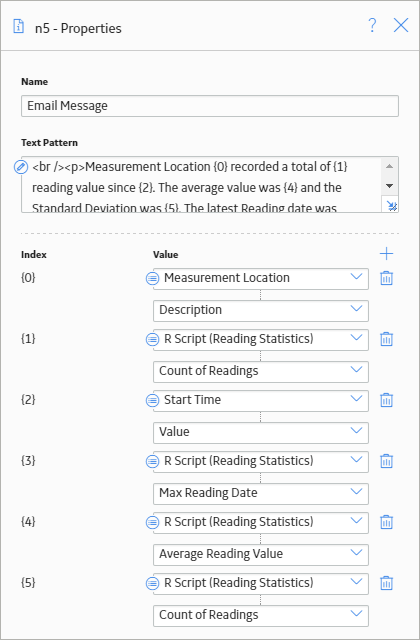The Properties window for an R Script node contains the items that are described in the following table.
|
Item |
Description |
Notes |
|---|---|---|
|
Path |
Specifies the path to the R script that will run when the policy is executed. |
You can type the path manually, or
you can browse to it by selecting |
|
Additional sections corresponding to the inputs expected by the R script. |
Specifies the values that will be used in the R script to calculate a result. |
The number of sections displayed in the Properties window is determined by the number of inputs configured in the specified R script. In each section, you can select the The value that you specify should correspond to the type of input expected by the R Script (i.e., a Vector of Values, a Matrix of Values, Data Frame, or a single value that is Numeric, Character, Boolean, or Time & Date). |
